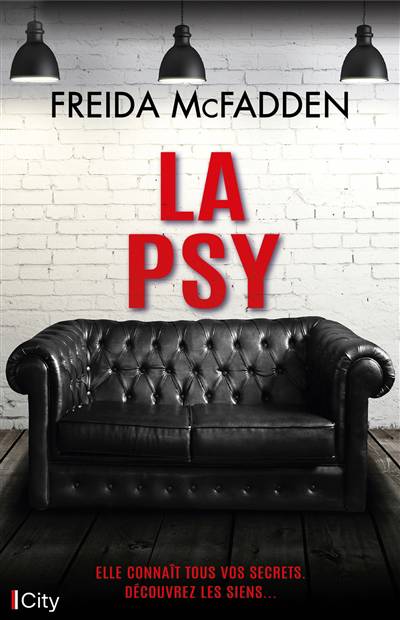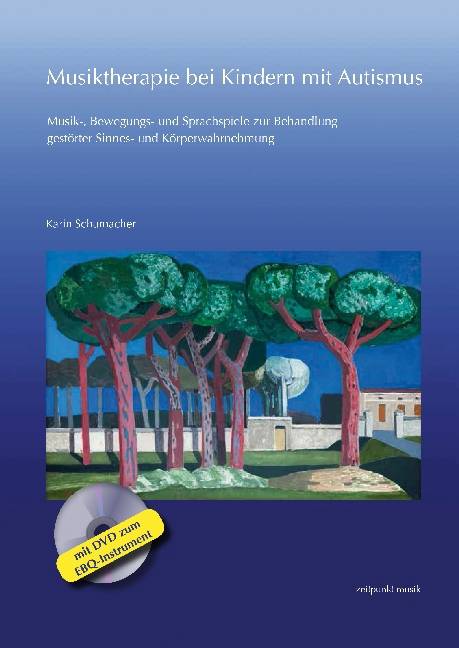
- Retrait gratuit dans votre magasin Club
- 7.000.000 titres dans notre catalogue
- Payer en toute sécurité
- Toujours un magasin près de chez vous
- Retrait gratuit dans votre magasin Club
- 7.000.0000 titres dans notre catalogue
- Payer en toute sécurité
- Toujours un magasin près de chez vous
Musiktherapie Bei Kindern Mit Autismus
Musik-, Bewegungs- Und Sprachspiele Zur Behandlung Gestorter Sinnes- Und Korperwahrnehmung (Mit DVD Zum Ebq-Instrument)
Karin Schumacher
31,45 €
+ 62 points
Description
English summary: This book has been written on the basis of practical experience for the use of other music therapists in their practical work. Children with a pervasive developmental disorder, who have been diagnosed with autism, display a contact disturbance not only to other people, but also to themselves.Perception of stimuli seems not to result in observable affective reaction, or the child with autism is unable to express this. The sensory impressions are presumably not reliably and therefore not meaningfully processed. Symptoms such as stereotype behaviour and inability to play as well as lack of speech or speech disabilities are the result. The theme "Autistic-Spectrum-Disorder" has been discussed extensively by experts, however, they refer mainly to behaviour modification therapies that have the aim of integration into the social world and leading an independent life. Important as these aims are, nevertheless the treatment of this disorder is in itself an important approach. In this book a course of therapy is presented that treats the actual socio-emotional disturbance, that is presumably based on a perception processing and body feeling disturbance. The children described in this book are also mentally impaired and mostly also have no developed speech. The medium of music offers a means of communication that removes their socio-emotional isolation and relieves the lack of expression they suffer from. The film excerpts in the enclosed DVD show the development of the boy called Max. Music, movement and speech games, where the child is the starting point, without any obligation to join in or imitate, show that emotions can be aroused, which are the motor of all developments. Physical, instrumental and vocal-pre-speech utterances as a prerequisite for a communicative language are evoked, and playfully lead to interpersonal communication.The music therapy interventions described here precisely in children with pervasive developmental disorder, especially with autism show how lively and capable for development these children are.However, these interventions have to be developed entirely by taking the the body and the affect of the child as starting point, and is determined by the situation.Only then will they help to process the sensory impressions as a unity and lead to the experience of synchronous moments.Neurobiological research confirms the need to connect perception, emotional experience, action and speech. And exactly this procedure is described here. The analysis of the videographed course of therapy with the help of the so-called "AQR-Tool" represents the development of the child Max in music therapy.Thus we can comprehend the effect of music therapy. German description: Dieses Buch ist aus der Praxis und fur die Praxis geschrieben. Tiefgreifend entwicklungsgestorte Kinder, die mit "Autismus" diagnostiziert wurden, zeigen eine Kontaktstorung nicht nur zu anderen Menschen, sondern auch zu sich selbst. Wahrnehmung und Erleben scheinen nicht selbstverstandlich verbunden, die Sinneseindrucke werden vermutlich nicht verlasslich und damit sinngebend verarbeitet. Symptome wie stereotypes Verhalten und Spielunfahigkeit, sowie Sprachlosigkeit bzw. Sprachstorungen sind die Folge. Das Thema "Autismus-Spektrum-Storung" wird zwar in der Fachwelt ausgiebig behandelt, es uberwiegen jedoch verhaltensmodifizierende Therapien, die eine Integration in die soziale Welt und ein moglichst selbstandiges Leben zum Ziel haben. Neben diesen zweifellos wichtigen Zielen ist aber die Behandlung des Storungsbildes selbst ein anderer Ansatz.In diesem Buch wird ein Therapieverlauf dargestellt, der die eigentliche sozio-emotionale Storung behandelt, die vermutlich auf einer Wahrnehmungsverabeitungs - und Korpergefuhlstorung beruht. Die Kinder, um die es hier geht, sind auch mental eingeschrankt und haben meist keine Sprache entwickelt. Das Medium Musik bietet eine Mitteilungsmoglichkeit, die ihre sozio-emotionale Isolation aufhebt und das Leid dieser Ausdrucksnot mildert. Die Filmausschnitte auf der beigefugten DVD zeigen die Entwicklung des Jungen Max.Ganz vom Kind aus entwickelte Musik-Bewegung-und Sprachspiele zeigen, dass ohne die Aufforderung, etwas mit-oder nachmachen zu mussen, Emotionen als Motor jeglicher Entwicklung geweckt werden konnen. Korperliche, instrumentale sowie stimmlich-vorsprachliche Ausserungen als Voraussetzung fur eine kommunikative Sprache werden evoziert und fuhren spielerisch zur zwischenmenschlichen Verstandigung. Die hier genau beschriebenen musiktherapeutischen Interventionen bei tiefgreifend entwicklungsgestorten Kindern mit Autismus zeigen, wie lebendig und entwicklungsfahig diese Kinder sind.Diese Interventionen mussen allerdings ganz vom Korper des Kindes ausgehend aus der jeweiligen Situation entwickelt werden.Nur dann helfen sie, die Sinneseindrucke als Einheit zu verarbeiten und fuhren zum Erleben synchroner Momente. Neurobiologische Forschungsergebnisse bestatigen die Notwendigkeit, Wahrnehmung, Erleben, Handlung und Sprache in Verbindung zu bringen. Und genau dieses Vorgehen wird hier beschrieben. Die Analyse des videographierten Therapieverlaufs mit Hilfe des sogenannten "EBQ-instrumentes" stellt die Entwicklung des Kindes in der Musiktherapie dar.
Spécifications
Parties prenantes
- Auteur(s) :
- Editeur:
Contenu
- Nombre de pages :
- 168
- Langue:
- Allemand
- Collection :
Caractéristiques
- EAN:
- 9783954902293
- Date de parution :
- 14-11-17
- Format:
- Livre broché
- Format numérique:
- Trade paperback (VS)
- Dimensions :
- 170 mm x 239 mm
- Poids :
- 358 g

Les avis
Nous publions uniquement les avis qui respectent les conditions requises. Consultez nos conditions pour les avis.






